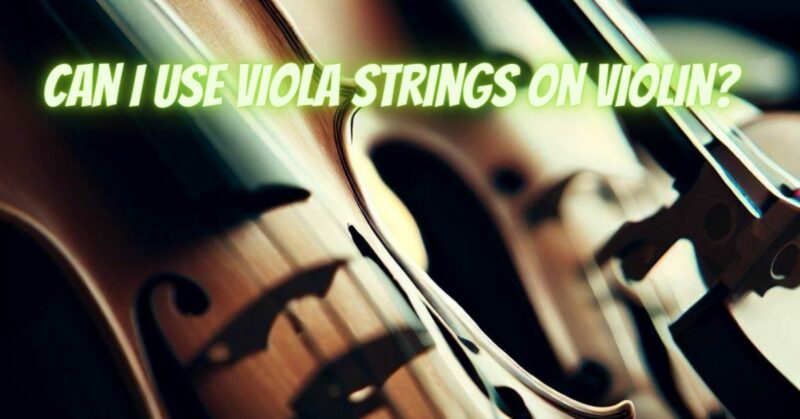As a violinist, you may have wondered about the possibility of using viola strings on your violin. While both instruments share similarities, including their four-string configuration and similar playing techniques, it is important to understand the distinctions between them. In this article, we will explore the differences between violin and viola strings, as well as the compatibility and potential implications of using viola strings on a violin.
String Differences:
The strings of a violin and a viola are designed to produce different pitches and tonal characteristics. The violin is tuned higher than the viola, with its strings typically tuned to G, D, A, and E. Viola strings, on the other hand, are tuned lower to C, G, D, and A, with the C string providing a deeper, richer sound.
Physical Differences:
Viola strings are generally longer and thicker than violin strings due to the larger size of the viola. The additional length and thickness contribute to the desired lower pitch and tonal qualities of the viola. Violin strings, being shorter and thinner, are designed to produce the higher pitch and tonal characteristics suitable for the violin.
Compatibility and Implications:
While it is physically possible to put viola strings on a violin, it is not recommended due to several factors:
- Tension and Pressure: Using viola strings on a violin can create excessive tension and pressure on the instrument. Violin strings are designed to provide the appropriate tension for the violin’s structure, ensuring optimal sound production and instrument integrity. Viola strings, with their higher tension and thickness, can put undue stress on the violin’s delicate components, potentially leading to structural damage.
- Sound Quality and Projection: Violin and viola strings are specifically engineered to optimize the tonal characteristics and projection of each instrument. Violin strings are designed to enhance the violin’s bright, focused sound and projection, while viola strings are tailored to produce the deeper, resonant qualities of the viola. Using viola strings on a violin can result in a compromised sound quality, affecting the instrument’s natural tonal balance, projection, and responsiveness.
- Playability and Technique: Violin and viola strings have different playing characteristics due to their variations in tension, thickness, and length. Violinists are accustomed to the specific response and feel of violin strings, including their bowing responsiveness and fingerboard interaction. Switching to viola strings may affect playability, bow control, and intonation, potentially impacting your technique and musical expression on the violin.
While it is technically possible to use viola strings on a violin, it is not recommended due to the potential negative implications on the instrument’s structural integrity, sound quality, playability, and technique. Violin and viola strings are designed and engineered specifically for their respective instruments to optimize their unique tonal characteristics, projection, and playability. If you are seeking to explore different tonal possibilities on your violin, it is advisable to consult a qualified luthier or violin specialist who can guide you in selecting violin strings that align with your desired sound while maintaining the instrument’s integrity and playability.


